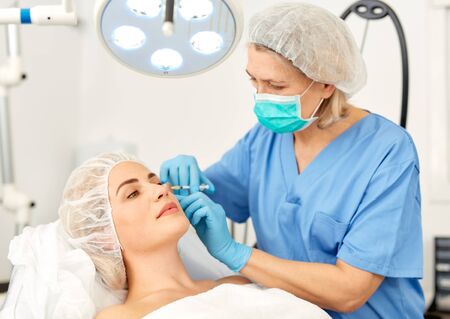1. Introduction to Microdermabrasion
Microdermabrasion is a popular, non-invasive skincare treatment that helps improve skin texture and tone. It’s widely used by people of all ages and skin types to achieve a smoother, more youthful complexion. This treatment gently exfoliates the outer layer of dead skin cells, promoting cell turnover and revealing fresh, healthy skin underneath.
How Does Microdermabrasion Work?
The procedure involves using a handheld device that sprays tiny crystals or employs a diamond-tipped wand to remove dead skin cells. Simultaneously, a vacuum suctions away the debris, leaving the skin feeling refreshed and rejuvenated. The process is quick, usually taking about 30 to 60 minutes, and requires no downtime.
Why Is Microdermabrasion So Popular?
Microdermabrasion has gained widespread popularity due to its effectiveness and minimal recovery time. Many people incorporate it into their regular skincare routines because it:
- Reduces the appearance of fine lines and wrinkles
- Helps with acne scars and hyperpigmentation
- Improves skin texture and tone
- Boosts collagen production for firmer skin
- Enhances the absorption of skincare products
Microdermabrasion vs. Other Exfoliation Methods
| Treatment Type | Method | Main Benefits |
|---|---|---|
| Microdermabrasion | Mechanical exfoliation using crystals or a diamond tip | Smooths skin, reduces fine lines, improves tone |
| Chemical Peels | Chemical solution applied to exfoliate layers of skin | Treats deeper skin concerns like pigmentation and acne scars |
| Physical Scrubs | Abrasive particles manually slough off dead skin cells | Immediate exfoliation but may be too harsh for sensitive skin |
2. Microdermabrasion for Oily and Acne-Prone Skin
If you struggle with oily or acne-prone skin, you know how challenging it can be to keep breakouts under control. Excess oil can clog pores, leading to blackheads, whiteheads, and persistent acne. Fortunately, microdermabrasion is an effective treatment that helps manage oil production, unclog pores, and reduce the appearance of acne scars.
How Microdermabrasion Helps with Oily Skin
Oily skin produces excess sebum, which can mix with dead skin cells and cause clogged pores. Microdermabrasion gently exfoliates the surface of the skin, removing this buildup and preventing future breakouts.
Benefits for Oily Skin:
- Controls excess oil: By removing dead skin cells and encouraging cell turnover, microdermabrasion helps regulate oil production over time.
- Keeps pores clear: Exfoliation prevents sebum from getting trapped in the pores, reducing the risk of acne formation.
- Improves skin texture: Regular treatments leave the skin feeling smoother and looking more refined.
How Microdermabrasion Helps with Acne-Prone Skin
For those dealing with frequent breakouts, microdermabrasion can be a game-changer. The treatment removes pore-clogging debris and enhances blood circulation, which promotes healing and reduces inflammation.
Benefits for Acne-Prone Skin:
- Unclogs pores: By sloughing off dead skin cells, microdermabrasion prevents bacteria buildup that can lead to acne.
- Reduces acne scars: Over time, repeated treatments help fade post-acne marks by stimulating collagen production.
- Evens out skin tone: Reduces redness and discoloration caused by past breakouts.
The Impact of Microdermabrasion on Acne Scars
If you have lingering acne scars, microdermabrasion can significantly improve their appearance. While deep scars may require additional treatments like chemical peels or laser therapy, microdermabrasion works well for mild to moderate scarring.
| Type of Acne Scar | How Microdermabrasion Helps |
|---|---|
| Pigmentation Marks | Evens out skin tone by exfoliating pigmented layers. |
| Mild Indentations | Smooths out uneven texture by promoting new skin growth. |
| Bumpy Scars | Softens rough areas and reduces surface irregularities. |
How Often Should You Get Microdermabrasion?
The frequency of microdermabrasion depends on your skin type and concerns. For oily or acne-prone skin, professionals typically recommend sessions every two to four weeks until desired results are achieved. Always consult a skincare specialist to determine the best schedule for your needs.

3. Benefits for Dry and Sensitive Skin
Microdermabrasion is a great option for individuals with dry and sensitive skin, as it provides gentle exfoliation without causing irritation. Unlike harsh scrubs or chemical peels, this treatment carefully removes dead skin cells while promoting better absorption of moisturizers and serums.
How Microdermabrasion Helps Dry Skin
One of the biggest challenges for dry skin is maintaining hydration. When dead skin cells build up on the surface, they can prevent skincare products from penetrating deeply. Microdermabrasion helps by removing this barrier, allowing moisture to reach the deeper layers of the skin.
How It Benefits Sensitive Skin
Sensitive skin often reacts negatively to aggressive treatments, leading to redness or discomfort. Microdermabrasion, however, is a non-invasive procedure that gently resurfaces the skin without using harsh chemicals. This makes it an excellent choice for those who want to improve their skin texture without experiencing irritation.
Key Benefits of Microdermabrasion for Dry and Sensitive Skin
| Benefit | Description |
|---|---|
| Enhanced Hydration | Allows moisturizers and serums to absorb more effectively. |
| Smoother Texture | Removes rough patches and promotes soft, even skin. |
| No Harsh Chemicals | Avoids irritation commonly caused by chemical exfoliants. |
| Gentle Exfoliation | Sheds dead skin cells without damaging the surface layer. |
If you have dry or sensitive skin, microdermabrasion can be a great way to achieve a refreshed and hydrated complexion without discomfort. Always consult with a skincare professional to ensure it’s the right choice for your specific needs.
4. Anti-Aging Benefits for Mature Skin
As we age, our skin naturally loses collagen and elasticity, leading to fine lines, wrinkles, and sagging. Microdermabrasion is a non-invasive treatment that helps combat these signs of aging by stimulating collagen production and improving overall skin texture.
How Microdermabrasion Stimulates Collagen Production
Collagen is the key protein responsible for keeping our skin firm and youthful. Over time, its production slows down, resulting in visible aging signs. Microdermabrasion works by gently exfoliating the top layer of dead skin cells, triggering the bodys natural healing process. This encourages new collagen formation, making the skin appear plumper and more youthful.
Reducing Fine Lines and Wrinkles
One of the biggest concerns for mature skin is the appearance of fine lines and wrinkles. By removing dead skin cells and promoting cell turnover, microdermabrasion helps soften these lines, giving the face a smoother and fresher look. Regular treatments can gradually reduce the depth of wrinkles over time.
Improving Skin Elasticity
Loss of elasticity makes the skin appear loose and tired. Since microdermabrasion enhances blood circulation and promotes collagen regeneration, it helps restore skin firmness. With improved elasticity, facial contours become more defined, and the skin regains a youthful bounce.
Benefits of Microdermabrasion for Mature Skin
| Benefit | Description |
|---|---|
| Collagen Stimulation | Encourages natural collagen production for firmer skin. |
| Smoother Texture | Reduces rough patches and uneven skin tone. |
| Diminished Fine Lines | Softens wrinkles and fine lines for a youthful appearance. |
| Improved Elasticity | Restores firmness and tightness to sagging skin. |
| Enhanced Blood Circulation | Promotes healthier-looking skin with better nutrient delivery. |
5. Customizing Microdermabrasion for Different Skin Needs
Microdermabrasion is not a one-size-fits-all treatment. Skincare professionals tailor the procedure based on individual skin types, concerns, and desired results to ensure optimal efficacy. By adjusting the intensity, frequency, and technique, they can enhance benefits while minimizing potential side effects.
How Professionals Tailor Microdermabrasion
Skincare experts assess various factors before performing microdermabrasion. They consider skin type, sensitivity levels, and specific concerns like acne scars, hyperpigmentation, or fine lines. Here’s how treatments are customized:
1. Adjusting Exfoliation Intensity
- Sensitive Skin: Uses a gentler suction level and finer crystals or diamond tips to prevent irritation.
- Oily/Acne-Prone Skin: May use a deeper exfoliation to help unclog pores and reduce breakouts.
- Mature Skin: Moderate exfoliation to stimulate collagen production without over-exfoliating.
2. Determining Treatment Frequency
The number of sessions needed varies depending on skin type and goals:
| Skin Type | Recommended Frequency |
|---|---|
| Sensitive Skin | Once every 4–6 weeks |
| Oily/Acne-Prone Skin | Every 2–3 weeks for initial treatments, then monthly maintenance |
| Mature/Aging Skin | Every 3–4 weeks to promote collagen production |
| Dull/Uneven Skin Tone | Every 2–4 weeks until desired brightness is achieved |
3. Combining with Other Treatments
Aesthetic professionals often pair microdermabrasion with complementary treatments for enhanced results:
- Chemical Peels: To further target pigmentation and fine lines.
- Hydrating Serums: To replenish moisture after exfoliation.
- LED Light Therapy: To calm inflammation in acne-prone skin.
The Importance of Post-Treatment Care
No matter the customization, proper aftercare ensures long-lasting results. Patients are advised to apply sunscreen daily, keep skin hydrated, and avoid harsh skincare products immediately after treatment.


